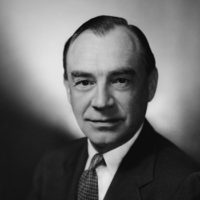
Albert Coons
American Heart Association Harvard Medical School
For the development of the fluorescent method of labelling proteins, a significant tool for the study of infection in human beings.
One of the most widely used of the newer techniques in immunology and pathology is Dr. Albert Coons's fluorescent method for the identification and localization of antigens and antibodies in tissues. A major invention in medical science during the past two decades, this tool has greatly broadened our knowledge of how the body reacts to infection.
Through this ingenious technique, Dr. Coons and his associates succeeded in making antibodies visible under a special ultraviolet microscope by tagging them with fluorescent dyes. Because antibodies react only with a specific invader, the new method has made it possible to identify a virus by tracking its attached antibody under the ultraviolet beam of the microscope.
With this technique, Dr. Coons and his associates have been able to identify the plasma cell as the principal unit engaged in antibody formation and to prove the importance in antibody production of the regional lymph nodes draining the site of antigen injection. Furthermore, his studies have indicated the probability that individual plasma cells produce antibody against only a single antigen.
Through the research of Dr. Coons, knowledge has been advanced with respect to many obscure diseases and phenomena of disease. His achievements have already been recognized by his selection to be a career investigator of the American Heart Association and a visiting professor of bacteriology and immunology at Harvard University. To these honors is now added an Albert Lasker Award in Medical Research by the American Public Health Association.
